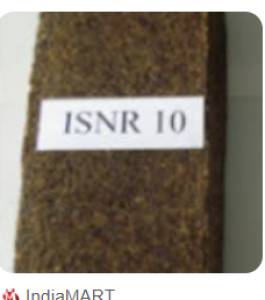Description
ISNR Grades: Streamline Your Seismic Data Interpretation
ISNR Grades represent a revolutionary approach to interpreting seismic data, offering unparalleled efficiency and accuracy in identifying and classifying subsurface geological features. Unlike traditional methods that rely on subjective interpretation, ISNR Grades leverage advanced algorithms and machine learning to provide objective, quantitative assessments of seismic data quality and geological significance.
What are ISNR Grades?
ISNR Grades are a standardized system of numerical ratings assigned to seismic reflections based on a comprehensive analysis of various data attributes. These attributes include:
- Signal-to-Noise Ratio (SNR): A measure of the clarity of the seismic reflection relative to background noise. Higher SNR indicates a stronger, more reliable signal.
- Continuity: The lateral consistency of the reflection event across the seismic section. High continuity suggests a continuous geological layer.
- Amplitude: The strength of the seismic reflection, reflecting the physical properties of the subsurface.
- Frequency: The dominant frequency of the reflection, offering insights into the lithological composition.
- Other relevant attributes: Depending on the specific application, additional attributes like coherence, curvature, or instantaneous attributes might be incorporated.
These attributes are analyzed using sophisticated algorithms, resulting in a single ISNR Grade for each reflection. The grading system typically ranges from 1 (poor quality, unreliable) to 5 (excellent quality, high confidence), though this can be customized to specific needs.
Benefits of Using ISNR Grades:
- Increased Efficiency: Automate the interpretation process, significantly reducing time and effort compared to manual interpretation.
- Improved Accuracy: Minimize subjective bias and improve the consistency and reliability of interpretations.
- Enhanced Geological Understanding: Gain a clearer, more quantitative understanding of subsurface geology.
- Objective Data Assessment: Provide a standardized, objective framework for evaluating seismic data quality.
- Better Decision Making: Support informed decision-making in exploration, production, and reservoir management.
- Integration with Existing Workflows: Seamlessly integrates with existing seismic interpretation software and workflows.
Applications of ISNR Grades:
- Seismic Interpretation: Quickly and accurately identify and classify subsurface horizons, faults, and other geological features.
- Reservoir Characterization: Evaluate reservoir quality and heterogeneity.
- Hydrocarbon Exploration: Identify potential hydrocarbon traps and assess their prospectivity.
- Geotechnical Engineering: Assess subsurface conditions for infrastructure projects.
- Geological Mapping: Create more accurate and detailed geological maps.
ISNR Grades are ideal for:
- Geophysicists: Streamline interpretation workflows and improve the accuracy of their analyses.
- Geologists: Obtain a clearer understanding of subsurface geology and reduce reliance on subjective interpretations.
- Petroleum Engineers: Make better informed decisions related to reservoir management and production optimization.
- Geotechnical Engineers: Improve the accuracy of their subsurface assessments for infrastructure projects.
Contact us today to learn more about how ISNR Grades can revolutionize your seismic data interpretation.
